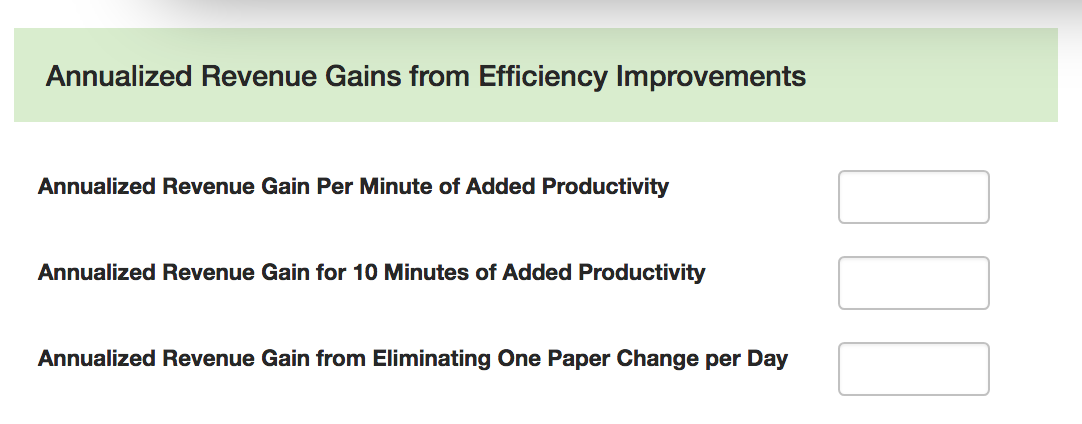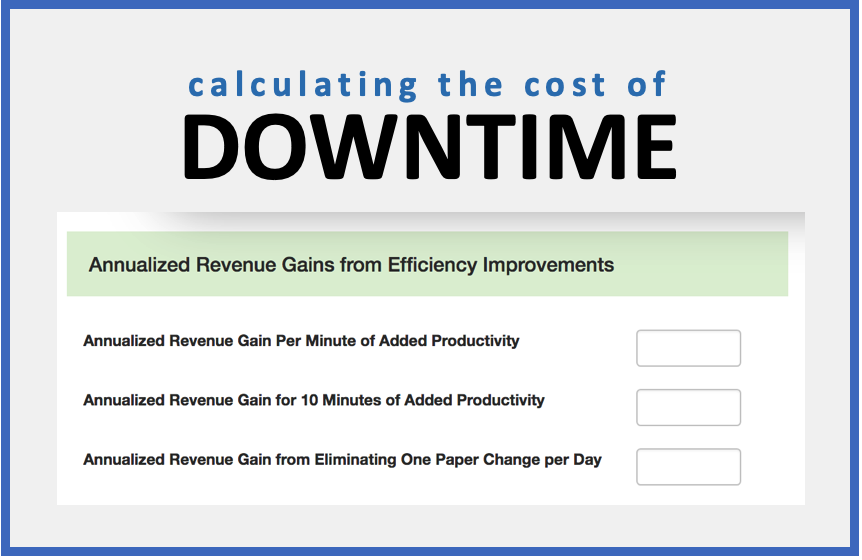I did a nice long article on the importance of making the business case for essential software and showed some big numbers associated with minor performance enhancements on high-speed inkjet. Today at the Inkjet Summit, I gave a keynote presentation on Essential Software for Efficient Inkjet Workflows and I thought it would be nice if the folks back home could play along.
So, below you will find a link to a very simple tool to allow you do do some “what if” analysis on how improvements in uptime, minimizing paper changes and other seemingly minimal improvements can impact your revenue over the course of the year. It adds up!
Here is the link to the calculator. It runs very nicely on mobile devices so you use it at your next meeting and plug in the numbers with your team or your boss or whoever you need on-board to justify your software and workflow decisions.
Here’s a little explanation (just a picture – not the real deal)

Input fields for Software Business Case Calculator – see explanation below.
This calculator could be used for toner devices as well as inkjet. The goal is to provide a simple calculation of the average value of your printed work in terms of revenue per minute and then to look at the impact of getting more of those revenue generating minutes into the day. We then look at the number of weeks per year you operate and the number of weeks per year to derive an annual revenue increase from the minutes you “win back” through efficiency. For this simple calculation, it doesn’t matter how many shifts you are running per day, however, the more shifts you are running, the more likely it is that you have an opportunity to win back some minutes.
We also asked how long it takes on average to change a roll of paper (or to change stocks in a sheet fed device if down time is involved for paper changes.) This may include the physical change of a roll as well as any color management that needs to happen to load profiles, etc. We have heard people say that they can change a roll in as little as 11 minutes (would really like to see that) but in many cases we are saying anywhere from 25 to 45 minutes depending on how different the new roll is from the one that was running before it. (We tend to harp on the paper changes because many companies underestimate the cost of unnecessary paper changes and fail to factor it into their TCO calculations and also into their pricing with clients who request new papers.)
We use the information above to generate the inumbers below (again just a picture folks – you have to click the link to load the calculator)

Picture of calculator output
Naturally, there is a certain amount of planned downtime that is expected with any production operation. So, you can take these numbers and adjust for that expectation – you are still going to end up with a big number on an annualized basis. Certainly enough to justify some improvements to your software infrastructure as you invest in that high-speed press.
So, test the scenarios with your own experience and let me know what you find out. I would also be curious to hear your thoughts on time to change paper. Comment, or contact me.
I hope this helps you justify some great new tools to make you more competitive. We’re all about the data here – and data is what it takes to make the business case.
In case you missed the link above, here it is again. Use the calculator to develop your own scenarios here
Elizabeth

